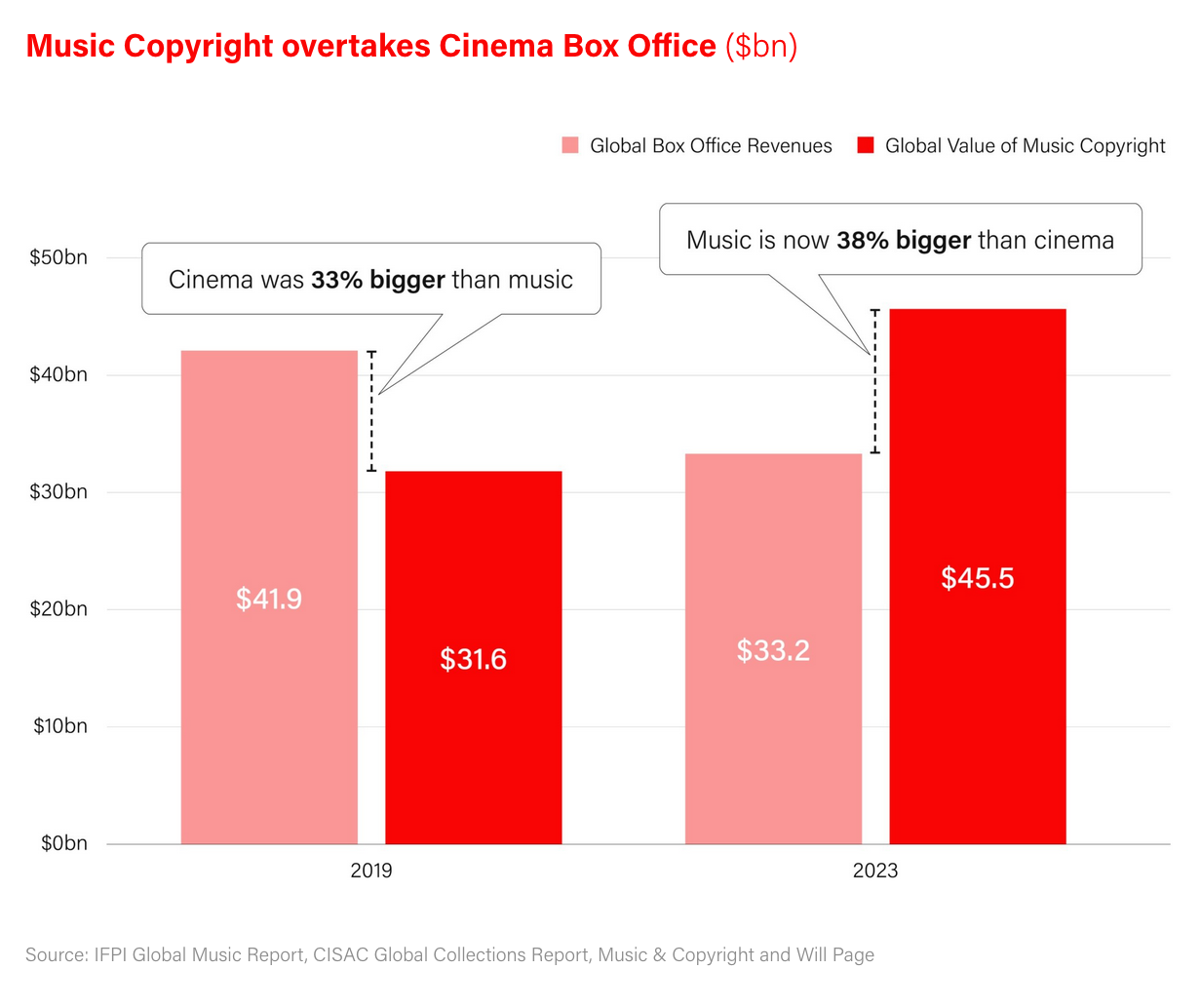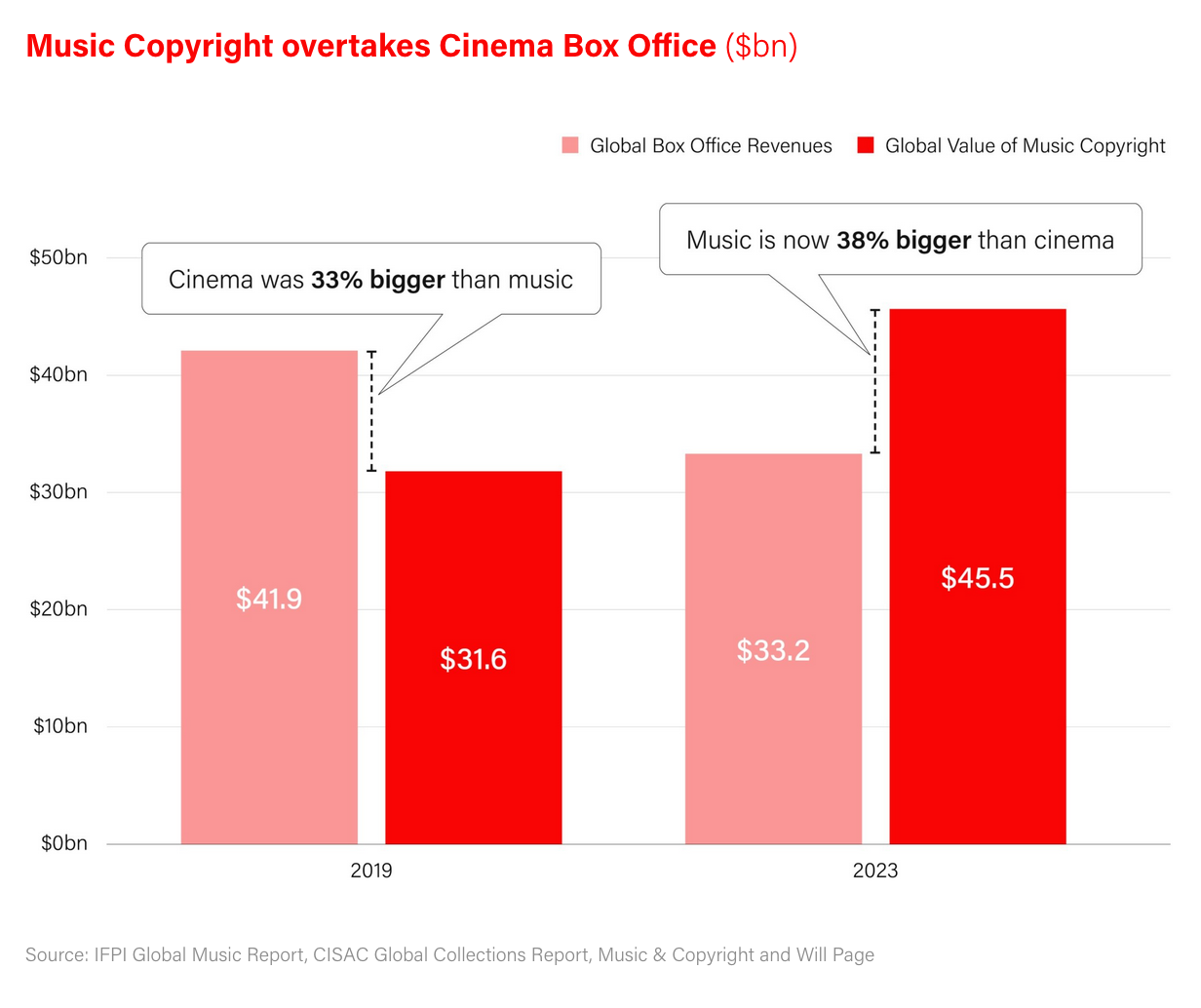Retro reconnaissance: It’s a piece of news that would have been unthinkable a decade ago, but it’s happening: Vinyl record sales are poised to eclipse CDs in the near future. And in an even more surprising twist, the music industry as a whole has leapfrogged the movie business to become the bigger breadwinner.
These revelations come courtesy of a new report on Pivotal Economics authored by Will Page, Spotify’s former chief economist who has been tracking the value of the music business for the past ten years.
Page’s findings paint a vivid picture of vinyl’s renaissance. His data indicates that in the US alone, vinyl sales are projected to bring in a staggering $1 billion for record labels in 2024. This means that vinyl revenues will soon surpass those of CDs, a feat that will be replicated globally.
Vinyl’s unit sales already exceed those of CDs. According to the Recording Industry Association of America, people bought 43 million vinyl records in 2023, which is 6 million more than the number of CDs sold in the same year. This is actually the second time this has happened since 1987.
So far, vinyl sales have been held back due to supply constraints. That’s changing quickly, though, with the report attributing it to the entry of major European players like Record Industry (Netherlands), GZ (Czech Republic), and Pressing Business (Poland) into the vinyl manufacturing arena. Their increased production capacity and streamlined international shipping processes are eliminating bottlenecks.
However, vinyl’s comeback is just a tiny part of the music industry’s wider resurgence. Page’s analysis also reveals that the value of music copyrights and performing rights – the royalties generated from record sales, streaming, radio plays, and live performances – has nearly doubled from $25 billion in 2014 to an impressive $45.5 billion today.
In contrast, the movie industry, once the undisputed king of entertainment, has seen its fortunes dwindle, with global box office revenues falling from their 2019 peak of $41.9 billion to $33.2 billion.
The report also highlights that streaming, unsurprisingly, has eclipsed radio and other broadcasting platforms as the primary revenue driver. This is a reversal from “a decade ago” when traditional radio accounted for over 50% of music income compared to streaming’s meager 5% share.
Meanwhile, live music performances have overtaken public performance licensing (the fees paid by commercial establishments to play music) as a top earner.
Image credit: Pivotal Economics



